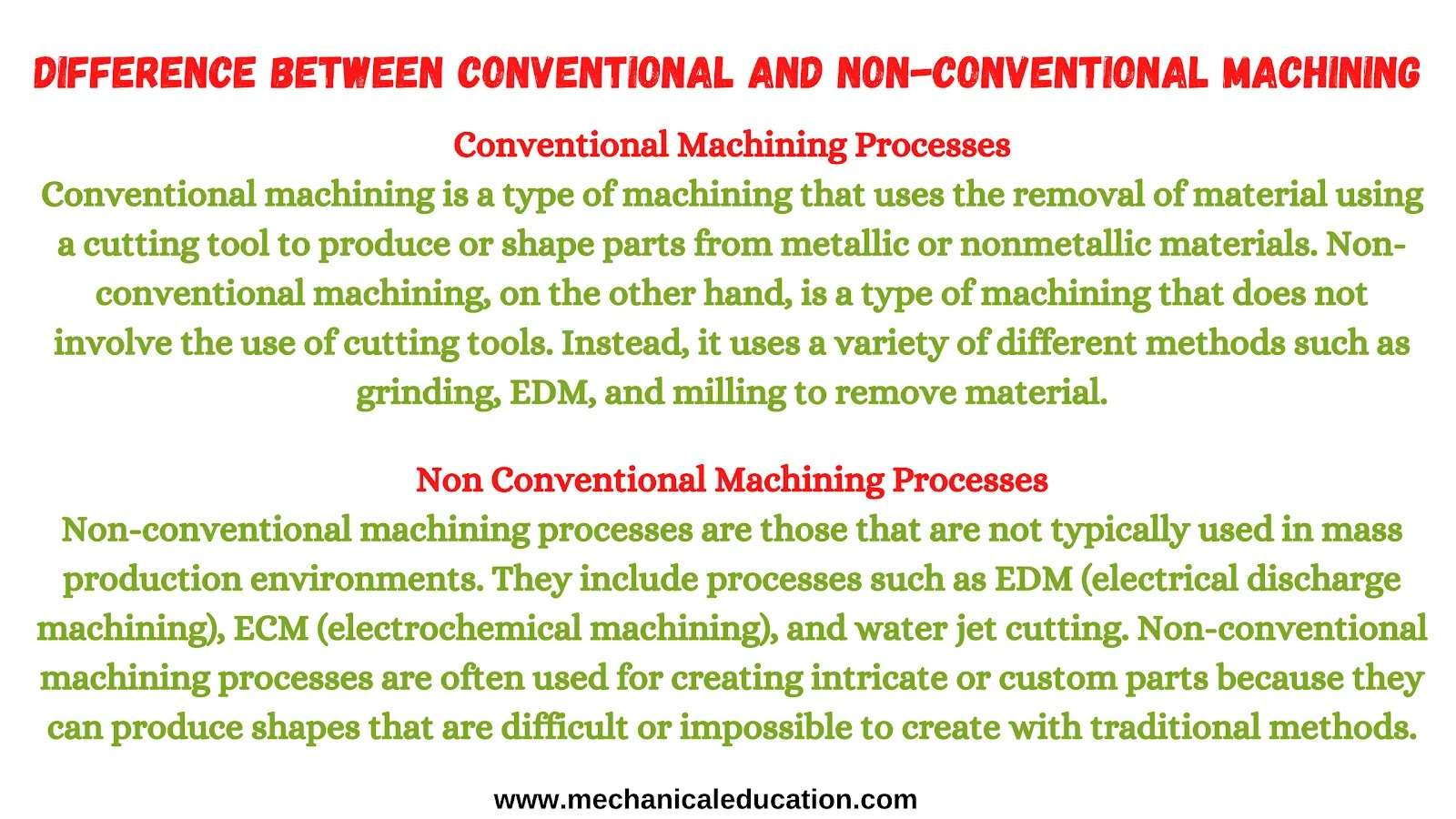Difference between Conventional and Non-Conventional Machining
Conventional Machining Processes:
Conventional machining is a type of machining that uses the removal of material using a cutting tool to produce or shape parts from metallic or nonmetallic materials. Non-conventional machining, on the other hand, is a type of machining that does not involve the use of cutting tools. Instead, it uses a variety of different methods such as grinding, EDM, and milling to remove material.
Non-conventional Machining Processes:
Non-conventional machining processes are those that are not typically used in mass production environments. They include processes such as EDM (electrical discharge machining), ECM (electrochemical machining), and water jet cutting. Non-conventional machining processes are often used for creating intricate or custom parts because they can produce shapes that are difficult or impossible to create with traditional methods.
Difference between Non-Conventional Machining and Conventional Machining Processes:
Conventional machining is the process of removing material from a workpiece to create the desired shape. This is done by using a variety of tools such as drills, milling cutters, and lathes to remove the material.
Non-conventional machining is a process that uses unconventional methods to remove material from a workpiece. This can include processes such as water jet cutting, laser cutting, and electron beam machining.
Conventional machining is typically done with metal tools that cut or grind away material from a workpiece to create the desired shape. Non-conventional machining, on the other hand, typically involves using lasers, water jets, or other methods to remove material without traditional cutting tools.
Conventional machining can only be used on materials that are strong enough to withstand the force of the cutting tool. Non-conventional machining, on the other hand, can be used on a wider range of materials since it doesn’t rely on traditional cutting tools. This makes non-conventional machining an ideal option for delicate or fragile materials
Whereas traditional machining allows for a perfect surface finish, non-conventional machining produces a rougher finish. Due to the material’s properties and tooling used, conventional cutting usually creates a smoother surface. The end product that comes from a non-conventional cut can be considered more utilitarian, intended for use rather than aesthetic purposes.
Non-conventional machining has its upside in structural challenges because this technique opens up the possibilities of creating shapes not possible with traditional methods or techniques alone.



